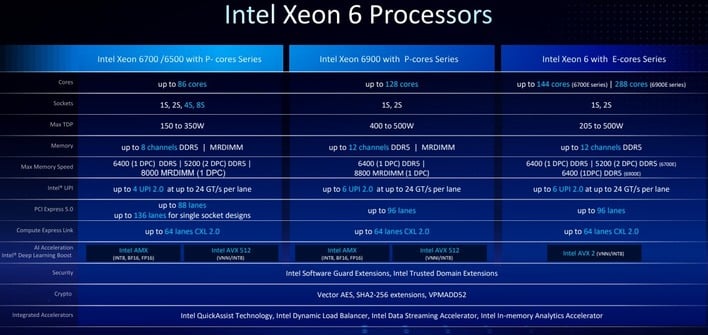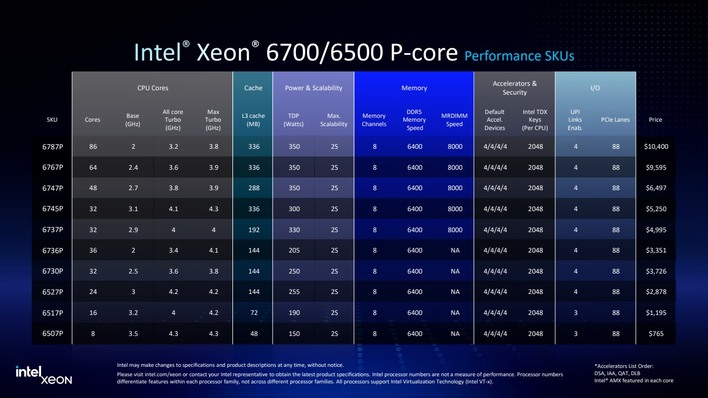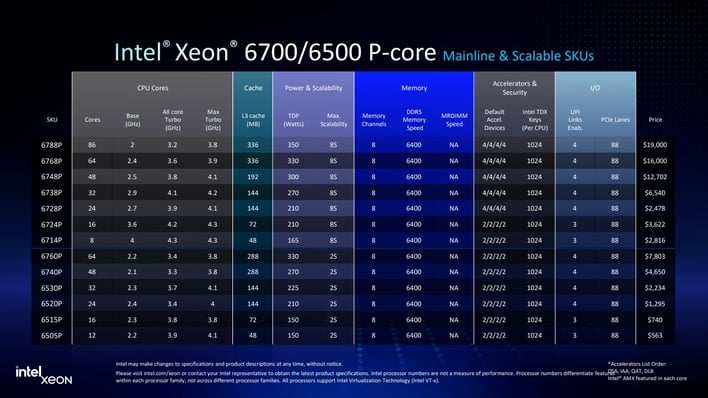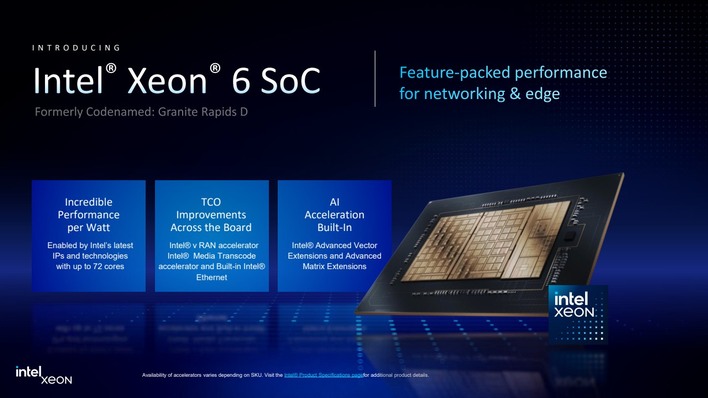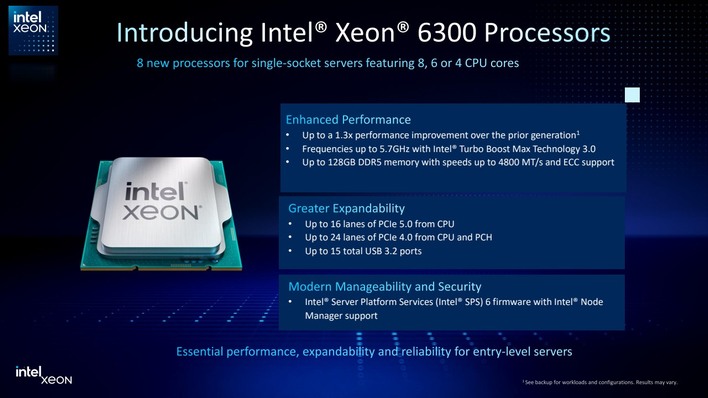Intel Launches New Xeon 6 Processors Optimized For AI At The Edge
Intel is officially calling the fastest of the new CPUs "Xeon 6700/6500 with P-cores series," and they're really quite similar to the "Xeon 6900 With P-cores series" from last September. They're simply scaled down; instead of topping out at 500 watts, six UPI 2.0 lanes, and 96 lanes of PCIe 5.0, the new parts max out at 350W TDP, four UPI 2.0 lanes, and up to 88 lanes of PCIe 5.0—although that goes up to 136 lanes in single-socket systems. The new parts still support MRDIMMs at up to 8000 MT/s, and 64 lanes of CXL 2.0 connectivity as well.
Notably, these parts will actually scale out way further than the Xeon 6900 series. You can provision the Xeon 6700/6500 parts in 4-socket and eight-socket configurations, which weren't available using the top-end Xeon 6900 CPUs. That could give you a machine with 688 Redwood Cove P-cores, if you find that Intel's CPUs are the fastest processors for your application.
That could feasibly be the case, because Intel asserts that Xeon 6 can deliver up to 1.5x better performance in AI inference compared to AMD's 5th Gen EPYC chips, and that's despite using 33% fewer cores. The company also touts substantial power efficiency improvements, claiming that upgrading from older servers could lead to a 5:1 or even 10:1 consolidation ratio, reducing overall operating costs.
Besides the standard Granite Ridge Xeons, Intel is also launching "Xeon 6 SoC", which is the latest member of the popular "Xeon D" family that started with Broadwell-DE way back in 2015. As you'd expect, it offers a pile of Redwood Cove CPU cores alongside both a bundle of specialized accelerators and advanced networking—up to 200-Gigabit Ethernet on the fancier SKUs.
Intel highlights the Xeon 6 SoC's built-in vRAN acceleration, which purportedly improves radio access network (RAN) capacity by 2.4x and boosts performance-per-watt by 70% over previous models. Intel also says that the inclusion of the Intel Media Transcode Accelerator enhances media processing efficiency, offering up to 14x the performance per watt in video workloads. These enhancements could be a big deal for telecommunications and media applications.
Lastly, Intel is of course launching a small line of desktop-class Xeon parts using the same silicon you'll find in its desktop CPUs. The Xeon 6300 series appear to be standard "Core" parts with the E-cores cut off, meaning that you get between four and eight P-cores clocked at up to 5.7 GHz and up to 128GB of dual-channel DDR5. These are basically for small business and other applications where you need ECC and Intel Server Platform Services (SPS), but don't need a full-on server rack.
Besides the CPUs, Intel's also introducing new Ethernet controller and network adapter products. The Intel Ethernet E830 series is designed for high-performance computing and AI workloads, boasting up to 200GbE bandwidth and precision time capabilities, while the E610 series focuses on power-efficient networking for control plane operations and tops out at "only" 10 Gigabit. The chart above outlines the new Ethernet products coming now from Intel.
AMD's EPYC has made huge strides in market share over the last few years, but by and large the internet still runs on Xeon. Indeed, Intel claims widespread adoption of Xeon 6, with over 500 designs already in development or deployment including major players like AT&T, Verizon, Cisco, and Microsoft. While real-world performance remains to be seen, Intel is positioning Xeon 6 as a major step forward in AI, cloud computing, and telecommunications infrastructure.


